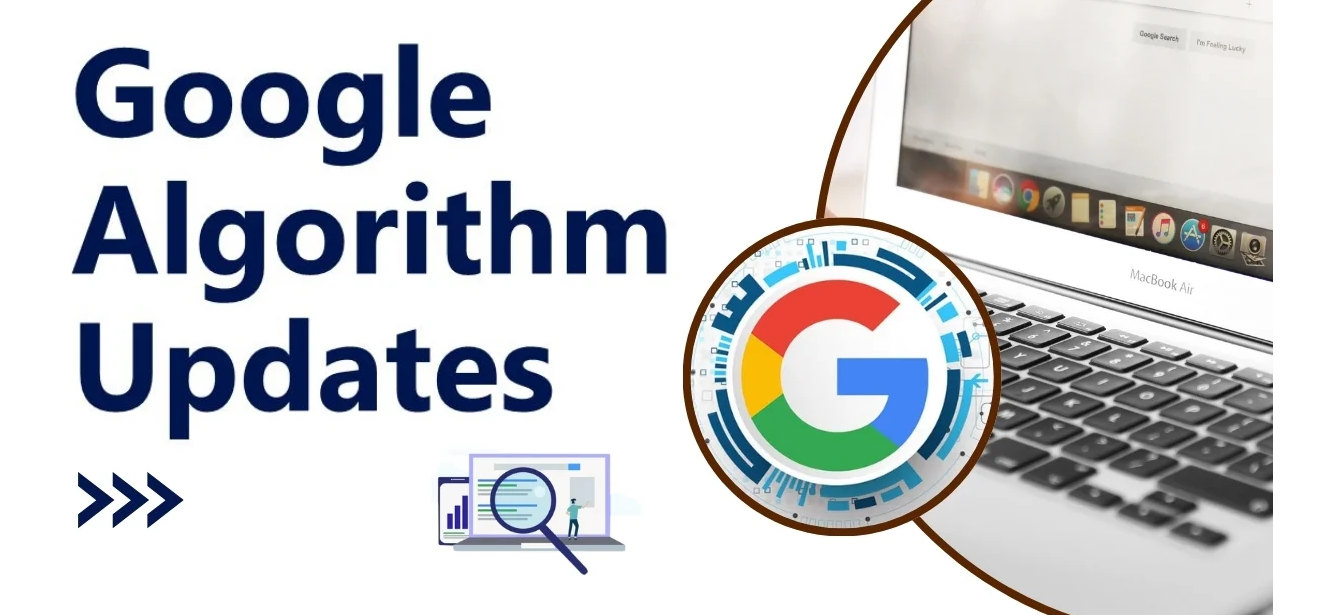Google’s search algorithms are constantly evolving, and understanding these changes is crucial for anyone looking to maintain or improve their website’s search rankings. In this article, we’ll dive into how Google’s algorithm updates affect SEO, how to stay informed, and the strategies you can use to future-proof your site.
What Are Google’s Algorithm Updates?
Google’s search algorithms are a set of rules and processes that determine how websites are ranked in search engine results. Every year, Google implements thousands of algorithm updates to improve search quality, relevance, and user experience. These updates can impact everything from keyword rankings to website traffic.
Some of these updates are minor, affecting only a small number of websites. Others, however, can be major changes that affect the search landscape and require businesses to adjust their SEO strategies accordingly.
Key Major Google Algorithm Updates
- Panda Update (2011)
Panda was designed to penalize websites with low-quality content and reward sites with well-researched, original, and informative content. The update emphasized the importance of content quality in SEO.
Key Takeaway: Focus on providing high-quality, user-focused content that solves problems and answers questions. - Penguin Update (2012)
The Penguin update targeted websites that used manipulative link-building strategies, such as buying backlinks or participating in link farms. It aimed to penalize sites with unnatural backlink profiles and reward those with organic, relevant backlinks.
Key Takeaway: Build high-quality backlinks through ethical methods, like guest posting, outreach, and content marketing. - Hummingbird Update (2013)
This update introduced semantic search, focusing more on understanding the meaning behind search queries rather than matching keywords exactly. It placed emphasis on search intent, making it critical to optimize for user intent rather than just targeting specific keywords.
Key Takeaway: Create content that addresses the user’s intent, not just the keyword they search for. - Mobile-Friendly Update (2015)
Also known as “Mobilegeddon,” this update favored mobile-friendly websites, as Google started prioritizing mobile search results. This was in response to the growing trend of mobile searches, which now make up a significant portion of online traffic.
Key Takeaway: Ensure your website is mobile-responsive to stay competitive in mobile search rankings. - RankBrain Update (2015)
RankBrain introduced machine learning to Google’s algorithm, allowing it to better understand complex search queries and adjust results accordingly. It focuses on user behavior and engagement metrics, including how users interact with search results.
Key Takeaway: Focus on user experience (UX) and make sure your website is easy to navigate and engaging for users. - Bert Update (2019)
BERT (Bidirectional Encoder Representations from Transformers) is a natural language processing update that allows Google to better understand the nuances of search queries. This update emphasized the importance of context and the relationships between words in a search query.
Key Takeaway: Create content that naturally answers user queries and avoids keyword stuffing.
How Google’s Algorithm Updates Impact SEO?
Each algorithm update affects different aspects of SEO, such as content quality, backlinks, and site structure. Here are some of the main ways updates can impact SEO:
- Changes in Keyword Rankings
Updates can cause shifts in keyword rankings as Google fine-tunes its understanding of what users are looking for. A previously high-ranking page may lose its position, while another page that better addresses search intent may climb higher. - Changes in Organic Traffic
Major updates can cause significant fluctuations in organic traffic. If a website is penalized or its content no longer aligns with the update’s goals, traffic can plummet. Conversely, sites that are in alignment with the update may experience a traffic boost. - Algorithm Penalties
Websites that violate Google’s guidelines (such as through manipulative link-building or thin content) may receive penalties that significantly hurt rankings. These penalties are often the result of updates like Penguin and Panda. - Increased Importance of User Experience
Updates like RankBrain and Core Web Vitals focus on user behavior signals such as dwell time, bounce rate, and page load speed. Websites with a poor user experience may be penalized, while those that prioritize UX are likely to see improvements in their rankings.
How to Stay Ahead of Google’s Algorithm Updates?
Staying ahead of Google’s algorithm updates requires a proactive approach and a commitment to SEO best practices. Here are some strategies to help future-proof your website:
- Stay Informed About Updates
Google announces major updates, but smaller updates may not be publicly disclosed. It’s important to stay up-to-date with the latest developments in SEO. Follow trusted SEO blogs, such as:- Google’s Webmaster Blog
- Moz Blog
- Search Engine Journal
- Search Engine Land
- Focus on High-Quality Content
Content remains one of the most important ranking factors in Google’s algorithm. Regularly update your site with relevant, high-quality content that aligns with search intent. Provide value to your readers and focus on creating comprehensive articles that answer their questions. - Diversify Your Backlink Profile
Relying too heavily on one type of backlink strategy can put your site at risk of penalties. Focus on earning natural, diverse backlinks from high-quality sources, such as reputable blogs, industry websites, and authoritative media outlets. - Improve User Experience (UX)
Google increasingly focuses on user signals. A website that is fast, easy to navigate, and mobile-friendly will have a better chance of ranking higher. Prioritize improving your site’s load speed, mobile responsiveness, and overall user engagement. - Use Structured Data and Schema Markup
Implementing structured data (schema markup) helps Google understand your content better and can improve your visibility in search results with rich snippets. This is especially important as Google continues to enhance its understanding of content. - Monitor Your Site’s Performance Regularly
Tools like Google Analytics and Google Search Console can help you track performance, traffic changes, and the impact of any algorithm updates. Keeping an eye on these metrics will allow you to quickly identify any issues and take corrective action. - Recover from Penalties
If your site is hit with a penalty after an update, you need to take action. Analyze the issue, make necessary improvements, and submit a reconsideration request if necessary. For example, if you were penalized for low-quality backlinks, you can disavow toxic links and focus on acquiring authoritative backlinks.
Conclusion
Staying ahead of Google’s algorithm updates requires a combination of good SEO practices, staying informed, and continuously improving your website. While you can’t control when Google releases an update, you can ensure your website is built with quality, user experience, and relevance in mind. By following SEO best practices and adapting to changes, you can minimize the impact of updates and maintain a strong presence in search engine results.

